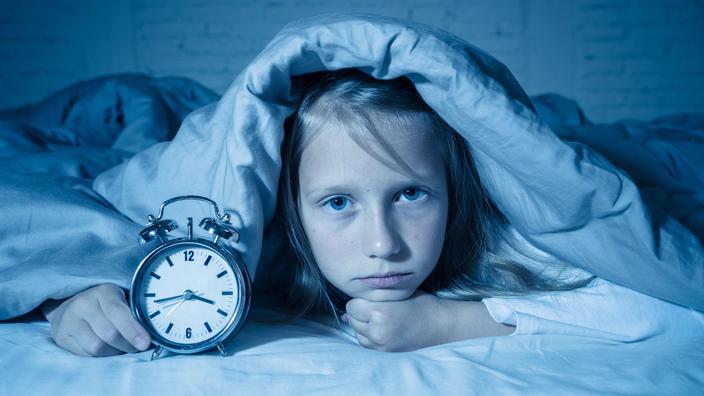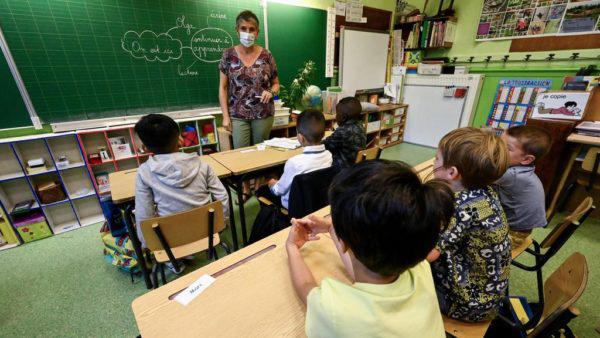
And here we go again. It will have been enough of yet another report of the Court of Auditors, always anxious to make savings on the back of public services and poor connoisseur of the realities of the school, to generate a wave of misinformation as ridiculous as it is infuriating. So let's say it again: no, a teacher does not work less than an average employee. No, he is not more absent, and he would be even less...
The Court of Auditors puts a coin in the machine
When we learned that the Court of Auditors was going to make an explosive report on teacher absenteeism, its cost, and give ideas to remedy it, we heaved a long sigh. Because we are well aware of the opinion of the Court of Auditors, it has been communicating regularly on this subject for years, we know what it proposes, so we were afraid of not being surprised, and we were right, There is nothing new under the sun. Except that the presidential campaign has been accelerating in recent days, and it is feared that the agenda effect will contribute to raising this subject (there are a few priority files before...).
What exactly does this report, entitled “The management of teacher absences” say? First, and this is what interests the Court of Auditors, that these absences cost 4 billion euros each year, and that it is a question of recovering them.
Then, we must distinguish primary from secondary: "the replacement of school teachers is provided in nearly 80% of cases in the first degree from the first day of absence and the reception of students guaranteed". But in secondary education absences of less than 15 days are rarely replaced (1/ 5th of the 2.5 million hours) and the Court of Auditors estimates that 10% of lesson hours were lost in 2018-2019. “More than a third (34%) can be explained by absences for individual reasons, the remaining two thirds coming from the very functioning of national education”. As we can see, the Court of Auditors is watering down its wine a little compared to its previous publications by lightening the shoulders of teachers to load those of the institution. But it's to better propose to change the rules...
In fact, to remedy these "institutional absences", the Court of Auditors, after blandly wishing that the administrative management of absences would improve (entry, follow-up), brought out its good old usual solutions:
- annualization of teachers' hours of service (bivalence is also invoked again);
- integration of an annual flat rate of replacement hours in the service obligations and reinforcement of the prerogatives of the head of establishment;
- organization of exams and pedagogical meetings outside teaching time (well, that's 2% of absences, huh).
We understand that this report on the absence of teachers is above all an opportunity for the Court of Auditors, on the eve of the presidential campaign, to propose a new management of teachers, which moreover fits quite well with the vision blanquerienne and the conclusions of its Grenelle de l'éducation.
At the turn of a paragraph we come across this sentence, which says it all: "In general, the gap between the regulatory service obligations and the annual working time owed by teachers as civil servants (1607 annual hours) leaves sufficient time slots so that absences due to the institution are not charged to teaching time”.
We read very well: teachers do not work 1607 hours a year.
It didn't take long before the school's most ignorant columnists were flaunting their incompetence on the news channel sets.
Teachers work (at least) as much as you, yes

Like others, Pascal Perri on LCI is careful not to compare what he presents as the working time of teachers with that of their European colleagues (the principle of comparisons, we recall, is that we compare with whatever we want, especially if it suits us); too bad, it would have been enough to browse the latest opus of an organization that this gentleman must know well, the OECD, in which we can read that the OECD average is 791 hours in primary school (and even 738 in Europe ), 723 hours in middle school (660 in Europe) and 685 hours in high school (629 in Europe). In primary school, only 3 countries out of 36 have a higher number of hours (Chile, Costa Rica and the United States)… So, are teachers all over the world as lazy as the French? Of course not, and this is where Pascal Perri's infographic is scandalous: the 972 hours displayed for primary school, the 540 hours for an aggregate, are not working hours as indicated, but working hours. teaching, which is not at all the same thing, except to consider that a teacher shows up every morning in front of his students with his mouth in his heart, wondering what he will be able to do, without correcting any notebooks, no copies, never preparing anything in his class, never meeting parents, having no meetings, never filling out a booklet, etc.
Obviously Pascal Perri is not the only one to continue, in 2021, to feed an archaic and totally above-ground thought on teachers (a bit as if we were limiting ourselves to thinking that he himself only works 242 hours a year, when he is on the air), because the very people who are supposed to look into them do it just as much: the Court of Auditors, therefore, which considers that the gap between what a teacher does and the 1607 hours of other workers leaves "sufficient time slots" to do other things, but also the Senate, in particular under the pen and by the voice of Gérard Longuet, high defender of the sir professor (Longuet has surprisingly just produced a report for the Senate saying how much the French teacher is poorly paid, go figure…). We remember in particular that in 2016, Longuet had written a report on overtime in the second degree, a pretext to make proposals on the working time of teachers that we find more or less in the report of the Court of Auditors . We had fun, with a touch of irony, counting the working hours of teachers based on the available studies, and we had shown that the 1607 hours, we do them largely, and many teachers are clearly at the -above. (I invite you to reread this post, I do it sometimes, just for the pleasure of addressing Mr. Longuet in thought, big up Gégé).
The teachers are less absent than the average employee, well if
There remains this story of absenteeism. We see it in a banner on LCI, "absent teachers are a scourge for national education", we hear it on Europe 1 ("because of the absenteeism of teachers, middle and high school students would lose 10% of hours course”), we read on Le Figaro, it is the absenteeism of teachers that poses a problem. And of course, this resonates particularly at this time when many teachers are infected with Covid-19 and are not being replaced.
This absenteeism of teachers is an old sea serpent to which we also, some time ago, devoted a blog post. The examination of two studies had enabled us to demolish this perennial received idea.
A study by the DGAFP (the Directorate General of the Civil Service) established the annual average of ordinary sick leave for civil servants at 7.1 days. At National Education, we are at 6.7 days of sick leave per agent and per year. A report on the state of the public service even established that the proportion of employees absent at least one day for health reasons during a week is, all sectors combined, 3.7% at the national level. It is 3.6% in the private sector, 3.8% in the civil service, and… 2.3% among teachers.
Conclusion 1: teachers are less absent than the average civil servant.
Another study by DARES (Statistics Department) on absences from work by employees, all areas combined, established a few years earlier that the rate of absenteeism for health reasons, all sectors combined, is on average 3 .7% and that it is 3.2% in education.
Conclusion 2: teachers are less absent than the average worker.
And again, a note from the DEPP (Department of Evaluation, Prospective and Performance) explained how the figures for teacher absenteeism were inflated by the strong feminization of the profession (68%), particularly in the primary (82%), due to absences due to maternity, often accompanied by sick leave.
Quoting the report of the Court of Auditors (everything is not to be thrown away, it gives interesting figures, but these figures are not taken up by the eco columnists…), the Educational Café summarizes: “In 2019 there were 2.6% of absences over a typical week among teachers, 3.2% among state officials, 5.1 in the territorial, 4.6 among hospital and 3.9 in the private sector. For sick leave alone, half of the teachers do not take it over a year. A quarter takes one once.”
The question of the supposed absenteeism of teachers, chimerical, is the tree that hides the forest: the non-replacement of absent teachers is the real problem. And if we asked the ministry what it thinks?
Note: the note on the working time of teachers, big up Gégé: "Annualize the working time of teachers, chick!".
The ticket on absenteeism, big up Ferri: "The teachers, less absent than the average employee".
Follow the instit'humeurs on Facebook and on Twitter @LucienMarboeuf.






